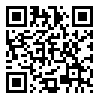دوره 14، شماره 1 - ( 12-1403 )
جلد 14 شماره 1 صفحات 0-0 |
برگشت به فهرست نسخه ها
Download citation:
BibTeX | RIS | EndNote | Medlars | ProCite | Reference Manager | RefWorks
Send citation to:



BibTeX | RIS | EndNote | Medlars | ProCite | Reference Manager | RefWorks
Send citation to:
Mahmoudi E, pournajaf A, jalounejad A H, bagheri T, seyedmajidi S, Ghafari M Z. Comparison of Bacterial Microleakage of two Methods of Single Cone Filling and Lateral Compression with two Sealers AH26 and Endoseal MTA. J Emerg Health Care 2025; 14 (1) : 2
URL: http://intjmi.com/article-1-1247-fa.html
URL: http://intjmi.com/article-1-1247-fa.html
Comparison of Bacterial Microleakage of two Methods of Single Cone Filling and Lateral Compression with two Sealers AH26 and Endoseal MTA. . 1403; 14 (1)
چکیده: (1064 مشاهده)
Background:
Root canal sealers are effective in completely filling the root canal by reducing apical and coronal microleakage. The purpose of this study is to compare the bacterial microleakage of two methods of single cone filling and lateral compression with two sealers AH26 and Endoseal MTA.
Methods:
56 single-rooted teeth less than 1 mm from the apical foramen were cleaned and shaped with Sx to F3 files of the Protaper gold system along with washing with 5.25% sodium hypochlorite and sterilized by UV rays. Then they were divided into four groups (n=14) based on the type of sealer (Endoseal MTA or AH26) and canal filling method (side density or single cone). In each group, one positive control sample and one negative control sample were considered. Then the canal of the teeth was filled according to their group. The separate compartment model was used to investigate bacterial leakage with enterococcus faecalis bacteria. The samples were placed in an incubator and observed for 90 days. The day of turbidity of the culture medium of each sample was recorded. Finally, the data were analyzed using SPSS version 22 software and through chi-square, Kruskal-Wallis and Kaplan-Meier analyzes by log-rank test.
Results:
The highest number of teeth that suffered microleakage in the 90-day interval was observed in the Endoseal MTA group using the lateral compression method (91.7%) and the lowest number of microleakage was observed in the AH26 group using the single cone method (66.7%); However, no statistically significant relationship was found between the number of occurrences of microleakage and the studied groups (P=0.468).
Conclusion:
Considering the limitations of this study, no difference was observed in the use of AH26 and Endoseal MTA sealers with single cone and lateral compression methods in preventing bacterial microleakage. However, it seems that for Endoseal MTA sealer, using the single cone method will bring better results.
شمارهی مقاله: 2
| بازنشر اطلاعات | |
 |
این مقاله تحت شرایط Creative Commons Attribution-NonCommercial 4.0 International License قابل بازنشر است. |

